
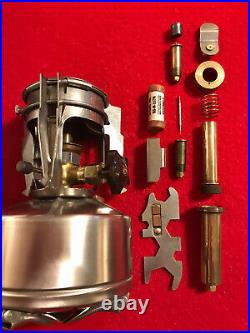
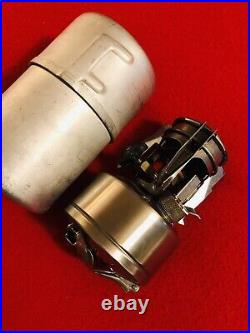
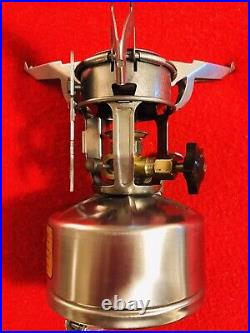
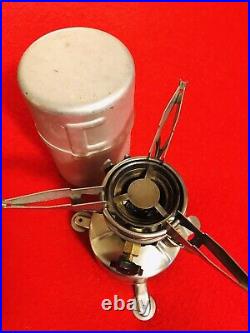
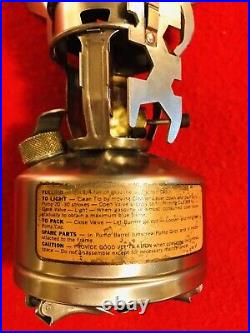
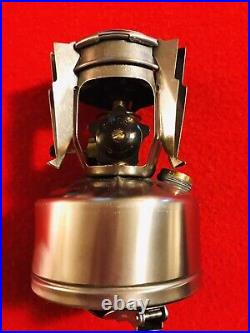
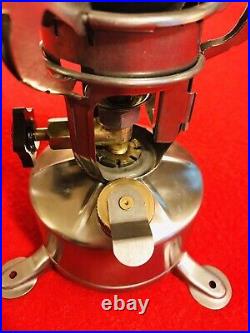
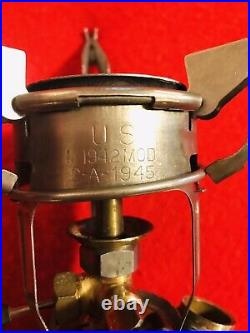
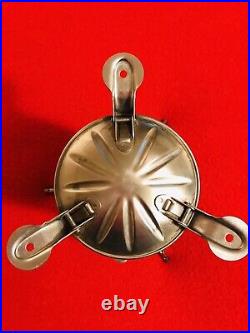
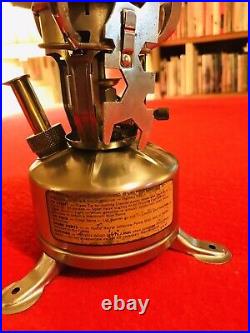
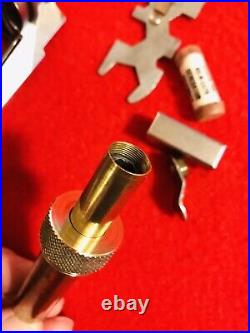
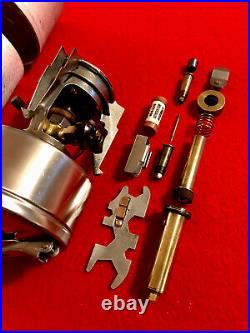

WW2 Mountain Gas STOVE, Complete! Stamped on the windscreen is. This appears to have only been used once! Stainless Single-Burner Steel Gasoline Stove for the Mountain Ski troops, First Special Service Force, Tankers (Armored personnel), Marines! Designed initially for the Ski/Mountain troops, this piece of equipment made it’s way into the supply system of even the U. Ernie Pyle, the beloved correspondent who traveled with the troop in Europe and the Pacific (and was killed on Ie Shima, Okinawa in 1945) remarked that next to the Jeep, this piece of gear was, emminently, the most useful piece of gear ever issued! This Stove was vastly. Wheel’ model produced in 1943. This example was made by “Coleman Appliances” C. , one of three contractors. Of the three contractors, surprisingly, COLEMAN had a contract ONLY for this year… This unit has ALL of the parts: the Multi-purpose ADJUSTMENT WRENCH , the SPARE PARTS HOUSIN G with extra CONTENTS stored in the Pump Assembly an UNISSUED Generator Assembly STOCK NO. Included is the 2-piece Bayonet “F” Aluminum CANISTER provided to all three manufacturers from the C. ” and dated “1945” that served as both “cooking pots” and as “carrying container. The Brass FUEL CAP, PUMP, SPRING, and the supple, freshly-oiled LEATHER PLUNGER GASKE T function smoothly. The “Bakelite” VALVE KNOB is the correct Dark-Maroon Coleman model (NOT Black, as are the other manufacturers) and the points of the 5-stars are broader which is correct for the Coleman model. The knurled PUMP CAP is Solid Brass (NOT Nickel plated as is the Aladdin Cap). The original Wooden KNOB for the CLEANING NEEDLE is present. Needle is in Perfect condition and moves freely. GLISTENING, DENT-free Stainless Steel TANK, WINDSCREEN, AND POT SUPPORT ARMS. ZERO rust, corrosion, dents or scratches! The Fold-out FEET are the unique Coleman design with the smooth slope (NOT the angled design of the Prentiss-Wabers). They move freely and stay in place. This example retains an intact, PERFECT for its age! These Decals rarely survived more than several’uses’ being destroyed by both heat and exposure to fuel. These Decals were very delicate perishable and rarely survived more than several uses of the Stove. This one has NOT suffered from the heat, gasoline, or scratching from other gear! The POT-SUPPORT ARMS are “square-cut” at the pivot point, unlike those of the 1944 Aladdin model. They show ZERO heat discoloration or carbon build-up! The multi-pupose TOOL has the correct Coleman SCREWDRIVER BLADE , i. Flat round bevel on the opposite sid e (NOT hammered as are the Prentiss-Wabers and Aladdin models). WW2 Stoves Background from Sklcolorado blog. In 1941, and likely prior to December 7th, and under the deadline of 60 days, the Coleman Company of Wichita, Kansas, was given the charge of producing a quart-sized, all-weather, single-burner stove which could be carried by a soldier. In record time, they produced the Coleman 520 stov e, and seems to have been designated by the military as the M-1941 (though its actual full military designation is still unclear), which is the common term used by people to describe the AGM version. A second company, American Gas Machine Company (AGM), of Albert Lea, Minnesota, was also contracted to manufacture the Coleman design. According to documents I’ve read, over one million of these 520 stoves were produced during the war. The 520/M-1941 first saw service during the Africa campaign beginning in late 1942. By the time the Africa campaign began in 1942, construction of Camp Hale , in Colorado, was pretty much completed and U. Ski troopers were being trained in skiing, climbing, winter survival and ordinance. Camp Hale eventually became known for its 10th Mountain Division. Somewhere, in this same timeframe, Bestor Robinson, a lawyer, mountaineer and director of the Sierra Club in California prior to WWII, was assigned to a team at the U. Army’s Office of the Quartermaster General with the role of improving clothing and equipment for the army? The team was led by Robert Bates who was an avid mountaineer, and it’s worth reading his short bio. During this time, Robinson , was granted patents for the design of a compact stove, which is regularly called the “mountain stove” by many today. His patent designs for the stove and various parts of it can be found by searching the web for these numbers: Patent No. The contract to build the new little stove was apparently awarded to the Aladdin Industries subsidiary of The Mantle Lamp Company of America or Mantle Lamp themselves, and manufactured under the name Aladdin, similar to the parent company? It’s kind of confusing exactly who made it, since The Mantle Lamp Company made Aladdin lamps, and they had a subsidiary with the same name, plus, Mantle Lamp eventually merged with Aladdin. Aladdin is still in business today. You may be familiar with some of their products which sell under the Stanley vacuum bottle name and other food and beverage containers. The first model of the stove is commonly called the “wheel stove, ” by many collectors, because of the horizontal wheel used to operate the stove? My understanding is that the wheel design was to allow troopers to operate the stove in cold weather without removing their gloves or mittens. This model was only made by Aladdin and only in 1943. For reasons unknown to me, the stove was modified from the “wheel” design to one somewhat more conventional after only one year, particularly in the valve stem. This second stove model is known, and is stamped, as the M-1942 MOD. The model was also produced by Aladdin in 1944, and Prentiss Wabers a. Known as Preway of Wisconsin Rapids, Wisconsin and possibly by one other company (possibly Coleman), however, I have been unable to confirm this. In 1945, the M-1942 MOD. Was produced by Aladdin, Prentiss Wabers and Coleman. Coincidentally, Aladdin and AGM/Thermos ended up in court over the right to manufacture vacuum bottles in the late 1950s. It seems that the term thermos became a generic name, much the same way that the word Kleenex is used instead of facial tissue, or when Xerox was a generic term for making a duplicate paper copy. I’ve never seen manufacturing year stamps past 1945, so it appears that the stove was very short-lived with a production run of only three years; one year being the wheel stove and two years as the MOD-ified stove. Unts (tanks), steel pot-suov. Pport/burner frames, and steel tip-cleaner stems, this stove doesn’t get destroyed by rust. However, I’ve worked on two 1943, M-1942 “Wheel” stove. S , which is the early model, and it is not made of stainless steel and can have rust in places where the zinc has worn off. The stove itself is a good design and I’ve found it reliable and enjoyable to use. The tank is stainless steel and I’ve never seen the M-1942 MOD with rust in it or on it. It will typically need a good cleaning, especially because it was designed to run on regular gasoline and was regularly used with that fuel. The gasoline will leave sediment in the tank and generally clog the vaporizer screen. The item “WW2 Mountain Gas Stove M1942-MOD. (C. A. 1945) Coleman & Canister. MINT” is in sale since Tuesday, May 11, 2021. This item is in the category “Collectibles\Militaria\WW II (1939-45)\Original Period Items\United States\Field Gear, Equipment”. The seller is “bataan12213″ and is located in Little Rock, Arkansas. This item can be shipped to United States.
- Conflict: WW II (1939-45)
- Theme: Militaria
- Original/Reproduction: Original
- Region of Origin: United States
- Country/Region of Manufacture: United States
- Modified Item: No



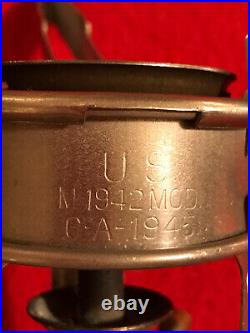
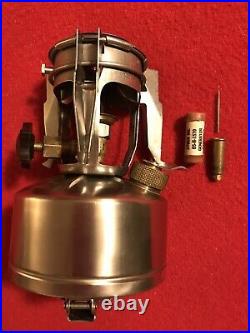
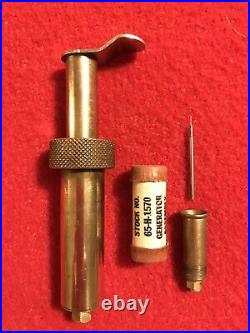

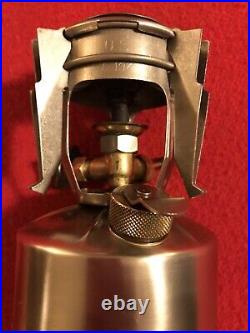
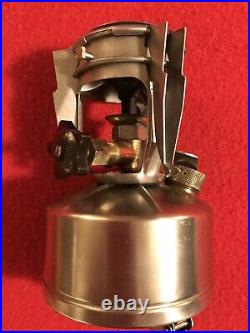
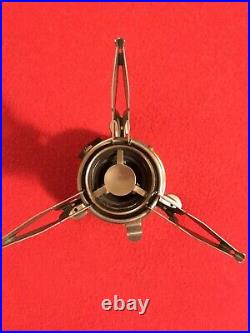
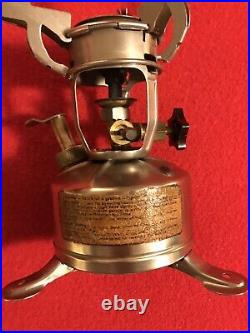
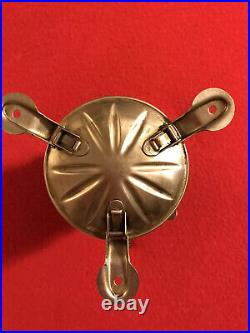
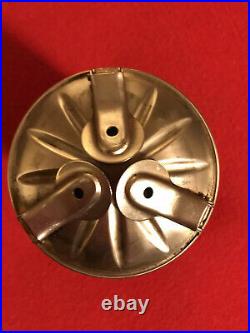
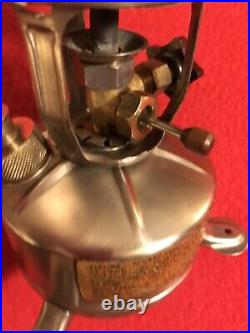

WW2 Mountain/ Ski Gas COLEMAN STOVE, U. 1945 Near Mint!! This one’s a true BEAUTY! Contrary to what many collectors have concluded about its association with Mountain/Ski troops, this Stove was designed for and made available to all ground troops: Armored personnel, Rangers, Paratroopers, even the Seabees and the U. This was the lightweight answer to foxhole cooking needs. This Stove, also referred to as a G. Pocket stove, ” is complete with a ” SPARE GENERATOR ASSEMBLY, Stock No. This “M1942 – MODIFIED” Stove” was made by COLEMAN APPLIANCE of Wichita, Kansas, one of three contractors of this “MODIFIED second, vastly improved model Stove. Of the three makers, COLEMAN APPLIANCE, ONLY made Stoves in the production year of “1945, ” which makes this a VERY desireable model. The other two manufacturers produced this Stove, Aladdin and Prentiss Wabers P. Produced stoves in both 1944 and 1945. After those two years, production of this Stove ceased altogether. The Prentiss Wabers modified Stoves are most commonly encountered, followed by Aladdin , but those made by Coleman Appliance are LEAST frequently found! This is aVERY CLEAN example! The ORIGINAL Decal is present in its entirety, intact, but crinkled. ” These highly perishable, bordered ” Sunflower Yellow INSTRUCTIONAL DECALS rarely survived exposure to heat and fuel, or were scratched up extremely easily. Both of the ORIGINAL KNOBS are present (the small turned Wooden one and the Black Bakelite Control Knob). The glistening, bright Stainless Steel TANK is completely free of dents, scratches, rust, corrosion, or damage of any sort! The Folding FEET , and the POT SUPPORT ARMS are in perfect shape and operate smoothly. The Brass FUEL CAP and Pressure PUMP ASSEMBLY are free of tarnishing and in absolutely perfect condition with REPLACEMENT PARTS still inside! The Leather GASKET in the Pump is supple and works smoothly, freshly oiled with NEATSFOOT OIL! This Stove was issued as evidenced by the DECAL and the traces of carbon on the SPIRIT CUP from very, very limited use it would appear. Coleman Appliance Company History. The Coleman Company, Inc. Is one of the most famous and successful manufacturers of camping equipment and outdoor recreational products. Coleman is the market leader in lanterns and stoves for outdoor recreational use, and it has created a loyal consumer following for a broad range of insulated food and beverage containers, sleeping bags, backpacks, tents, outdoor folding furniture, portable electric lights, and other recreational accessories. The company’s Powermate unit produces portable generators and portable and stationary air compressors. Coleman also makes and markets book bags, backpacks, and related products under the Eastpak and Timberland brand names. Although its stock is publicly traded, the Coleman Company is controlled by Sunbeam Corporation , which owns 79 percent of the company. The founder of the company, William Coffin Coleman, was born to a young couple who migrated west to Kansas from New England in 1871. Coleman became a schoolteacher in Kansas and later entered the University of Kansas Law School. Working the southern part of the United States, he found himself in Brockton, Alabama, a poor coal mining community with dirt streets and wood sidewalks. According to company lore, as Coleman was taking an evening walk down one of the town’s streets, he noticed the intense white glow of a lamp in a drugstore window. The lamp, which was powered by gasoline, was so bright that even with his bad eyesight Coleman was able to read under it easily. Since most people at that time used flickering gaslights, smoky oil lamps, or dim carbon filament light bulbs, Coleman immediately saw the lamp as an important step forward. Coleman arranged to sell this new type of lamp for the Irby-Gilliland Company of Memphis , and traveled to Kingfisher, Oklahoma, to begin his new venture. Since the lamps could not be cleaned, they clogged with carbon deposits which snuffed the light out after a short time. The salesman had left a bit too quickly, and the shopkeepers felt swindled. If the lamps failed, the customer did not have to pay. The business flourished as Coleman reinvested profits and branched out into neighboring communities. Not long afterward, he founded the Hydro-Carbon Light Company. In 1902 requests for his lighting service were so numerous that he decided to move the business to Wichita, Kansas, and establish a permanent headquarters. Ever on the lookout for original ways to market his lamps, Coleman in 1905 arranged for the Arc Lamps to provide the lighting for a night football game. Wartime Contributions of COLEMAN APPLIANCE. By 1909 Coleman had invented a portable table lamp with a gasoline tank designed as a small fount with a flat base. Bug screens were later added to protect the mantles during outdoor use. In 1914 the company developed the Coleman gasoline lantern for use in inclement weather. When World War I broke out, the Allies requested U. Wheat and corn to replenish their food supplies. During World War I, the company made over one million lamps for American farmers. The company grew steadily in the 1920s. Although electricity came to the smaller towns across the United States, most rural areas had to wait. Coleman thus found its largest markets in rural areas, with ever increasing sales of gasoline stoves, used both as camp stoves and cook stoves, and lamps and lanterns. The company also established international operations with a manufacturing plant and headquarters in Toronto. By the end of the 1920s the reputation of the Coleman lantern was firmly established, and various accounts of its use were reported: Admiral Byrd used the lantern on his trip to the South Pole; on Pitcairn Island the descendants of British mutineers from the Bounty and their Tahitian families illuminated primitive homes with Coleman lanterns; and Coleman lantern-lit runways in the Andes made emergency landings possible. The company was not entirely successful in developing new products and markets. During the late 1920s, Coleman made a line of waffle irons, coffee percolators, toasters, and electric irons. Coleman could not, however, compete with Westinghouse Electric Corporation and General Electric Company and withdrew these product lines quickly. William Coffin Coleman known as W. To the rest of the company designed a coffee maker for restaurants and hotels. Although it brewed excellent coffee, the machine was complicated to handle and difficult to clean. It was commercially unsuccessful and the company halted its production. Coleman was hit very hard when the stock market crashed in 1929. During the next two years, the Great Depression severely affected almost every industry in the nation. Inevitably, the company experienced financial losses, but a good working relationship with a number of banks helped Coleman to overcome the worst years of the depression. After Franklin Delano Roosevelt was elected to the U. Presidency in 1932, he launched a massive program for rural electrification, and Coleman was faced with a decline in its market for gasoline stoves and lights. At the same time, Coleman’s portable stove and lantern business was making headway in the camping equipment market, and the international operation was beginning to reap significant profits. When World War II began, Coleman was called upon to manufacture products for the various branches of the U. Armed services, including 20-millimeter shells for the Army, projectiles for the Navy, and parts for the B-29 and B-17 bombers for the Air Force. In June 1942 the company was notified by the Army Quartermaster Corps with an urgent request–field troops needed a compact stove that could operate at 125 degrees above and 60 degrees below zero, was no larger than a quart bottle of milk, and could burn any kind of fuel. Moreover, the Army wanted 5,000 of the stoves delivered in two months. Coleman worked nonstop to design and manufacture a stove to the Army’s specifications. The end product was better than the Army had requested: the stove could work at 60 degrees below and 150 degrees above Fahrenheit; it could burn all kinds of fuel; it weighed a mere three and one-half pounds; and it was smaller than a quart bottle of milk. The first order for 5,000 units was flown to U. Forces involved in the November 1942 invasion of North Africa. Ernie Pyle, the famous World War II journalist who wrote about the common man’s experience in the war, devoted 15 articles to the Coleman pocket stove and considered it one of the two most important pieces of noncombat equipment in the war effort, the other being the Jeep. When the war ended, Coleman’s business boomed. Since the company had been manufacturing products for the armed services during the war, there was an enormous backlog of demand for its regular products, which had been off the market. At the start of the decade, there were four main divisions of Coleman products: oil space heaters accounted for 30 percent of sales; gas floor furnaces, 30 percent; camp stove and gasoline lanterns, 20 percent ; and military contracts to supply Boeing Co. With airplane parts for the B-47 bomber, 20 percent. From the exceptional summary, ” SklColorado: Steve’s Life in Colorado”. By the time the Africa campaign began in 1942, construction of Camp Hale, in Colorado, was pretty much completed and U. Ski troopers were being trained in skiing, climbing, winter survival and ordinance. Camp Hale eventually became known for its 10th Mountain Division. Bestor Robinsons Stove Patent Drawings. Somewhere, in this same timeframe, Bestor Robinson , a lawyer, mountaineer and director of the Sierra Club in California prior to WWII, was assigned to a team at the U. Army’s Office of the Quartermaster General with the role of improving clothing and equipment for the army’s mountain divisions. The team was led by Robert Bates , who was an avid mountaineer, and it’s worth reading his short bio. During this time, Robinson, was granted patents for the design of a compact stove, which is regularly called the “mountain stove” by many today. His patent designs for the stove and various parts of it can be found by searching the web for these numbers: Patent No. The contract to build the new little stove was apparently awarded to the Aladdin Industries subsidiary of The Mantle Lamp Company of America or Mantle Lamp themselves, and manufactured under the name Aladdin , similar to the parent company’s well-known lamps. It’s kind of confusing exactly who made it, since The Mantle Lamp Company made Aladdin lamps, and they had a subsidiary with the same name, plus, Mantle Lamp eventually merged with Aladdin. Aladdin is still in business today. You may be familiar with some of their products which sell under the Stanley vacuum bottle name and other food and beverage containers. The first model of the stove is commonly called the “wheel stove, ” by many collectors, because of the horizontal wheel used to operate the stove’s burner. My understanding is that the wheel design was to allow troopers to operate the stove in cold weather without removing their gloves or mittens. This model was only made by Aladdin and only in 1943. For reasons unknown to me, the stove was modified from the wheel design to one somewhat more conventional after only one year, particularly in the valve stem. This second stove model is known, and is stamped, as the M-1942 MOD , where MOD denotes modified. The model was also produced by Aladdin in 1944, and Prentiss Wabers a. Known as Preway of Wisconsin Rapids, Wisconsin and possibly by one other company (possibly Coleman), however, I have been unable to confirm this. In 1945, the M-1942 MOD was produced by Aladdin, Prentiss Wabers and Coleman. Coincidentally, Aladdin and AGM/Thermos ended up in court over the right to manufacture vacuum bottles in the late 1950s. It seems that the term thermos became a generic name, much the same way that the word Kleenex is used instead of facial tissue, or when Xerox was a generic term for making a duplicate paper copy. I’ve never seen manufacturing year stamps past 1945, so it appears that the stove was very short-lived with a production run of only three years; one year being the wheel stove and two years as the MOD-ified stove. What gives this stove such a long life, is that it is mostly stainless steel and brass. Unlike other stoves of the same era, which have steel founts (tanks), steel pot-support/burner frames, and steel tip-cleaner stems, this stove doesn? T get destroyed by rust. However, I’ve worked on two 1943, M-1942 “Wheel” Stoves , which is the early model, and it is not made of stainless steel and can have rust in places where the zinc has worn off. The stove itself is a good design and I’ve found it reliable and enjoyable to use. The tank is stainless steel and I’ve never seen the M-1942 MOD with rust in it or on it. It will typically need a good cleaning, especially because it was designed to run on regular gasoline and was regularly used with that fuel. The gasoline will leave sediment in the tank and generally clog the vaporizer screen. It had a spirit cup for preheating the vaporizer a. Generator, folding feet and pot supports and an 8 ounce tank. Robert Bates, contributor to the design of the M-1942- MOD. Stove and other WWII U. Bates was born in Philadelphia and was the son of William Bates, a classical scholar at the University of Pennsylvania. He briefly attended the William Penn Charter School, and then Phillips Exeter Academy. He attended Harvard University from 1929 to 1935. At Harvard he was a member of the Harvard Mountaineering Club and with Charles Houston, Adams Carter, Bradford Washburn and Terris Moore was part of the group of climbers later known as the “Harvard Five” who would push forward the standards of American mountaineering in the 1930s. In 1937 Bates, with Bradford Washburn, made the first ascent of Mount Lucania in Yukon, which was then the highest unclimbed mountain in North America. It was also one of the most remote and inaccessible and had been declared “virtually impregnable”. The pair enlisted the aid of the pilot Robert Reeve to fly them to the mountain, but when they landed on the Walsh Glacier the aeroplane sank into the unexpectedly soft snow. After they had spent five days digging it out Reeve departed, warning Bates and Washburn that he would not be able to return to collect them as planned and that they would have to walk back to civilization. The pair climbed Mount Lucania, and the nearby Mount Steele, and were then faced with a 100-mile (160 km) trek through wilderness to Burwash Landing, without maps. They abandoned some of their food to save weight, expecting to restock at a cache left behind by an earlier expedition. However, the cache had been plundered by bears, and Bates and Washburn survived on mushrooms and squirrels during the trek out. Flooded rivers forced them to detour many miles out of their way, and they had eventually walked an estimated 156 miles by the time they reached Burwash Landing, 32 days after arriving on the glacier. The two men lost around twenty pounds each during the walk out. In 1937, Charles Houston invited Bates on an expedition to K2 for 1938, the world’s second highest mountain. It was the first expedition to the mountain for nineteen years, and while the focus was on reconnaissance and assessing the feasibility of different routes, Bates was part of a group which reached within 800 m of the summit on the Abruzzi Spur, which would become the preferred route on the mountain. The expedition failed due to bad weather and the illness of Art Gilkey, but was widely praised for the courage shown by the team in their unsuccessful attempt to save Gilkey. During the descent, Bates and five other climbers were involved in a near-fatal fall, saved only by the strength of Pete Schoening, who was the last man on the rope. Bates later received the David A. Sowles Memorial Award for his part in the attempted rescue. During the Second World War Bates served in the United States Army and was assigned to the Office of the Quartermaster general, where he worked on the development of improved equipment and clothing for the army’s mountain divisions. He recruited a skilled wartime team that included mountaineers William P. Wood III, Bestor Robinson , H. Adams Carter, Terris Moore, Bradford Washburn and Australian arctic explorer Hubert Wilkins. He reached the rank of Lieutenant Colonel and was awarded a Bronze Star and the Legion of Merit. After the war, Bates taught English at Phillips Exeter Academy. He continued mountaineering throughout his life, and at the age of 74 led an expedition which made the first ascent of Ulugh Muztagh in China. He also spent a year in Kathmandu directing a Peace Corps project, and served as president of the American Alpine Club , which awards the Robert Hicks Bates Award to promising young climbers in his honour. Bates was the author of several books. With Charles Houston he wrote accounts of their two K2 expeditions as Five Miles High and K2 – The Savage Mountain ; the latter being regarded as a mountaineering classic. He also wrote Mystery, Beauty, and Danger , a study of mountaineering literature, and Mountain Man: The Story of Belmore Brown , the biography of an artist and explorer. His autobiography, The Love of Mountains Is Best , was published in 1994. The item “WW2 Mountain Gas STOVE Coleman M1942-MOD. / C. A. 1945 Near Mint” is in sale since Wednesday, January 13, 2021. This item is in the category “Collectibles\Militaria\WW II (1939-45)\Original Period Items\United States\Field Gear, Equipment”. The seller is “bataan12213″ and is located in Little Rock, Arkansas. This item can be shipped to United States.
- Theme: Militaria
- Modified Item: No
- Country/Region of Manufacture: United States
- Original/Reproduction: Original
- Region of Origin: United States
- Conflict: WW II (1939-45)


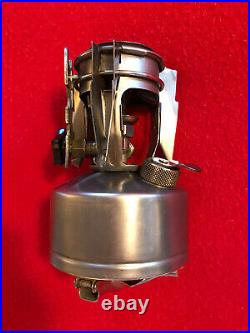
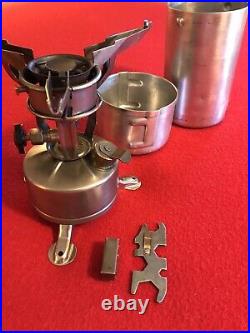
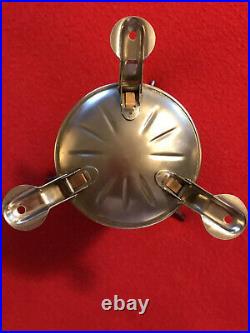
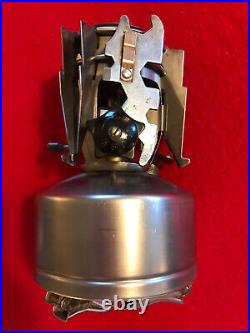
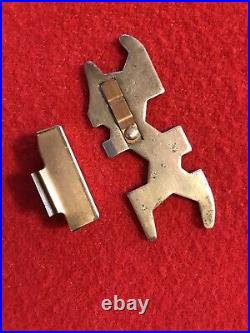
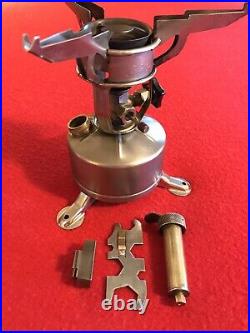

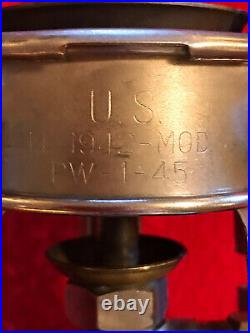
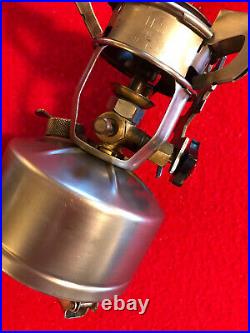
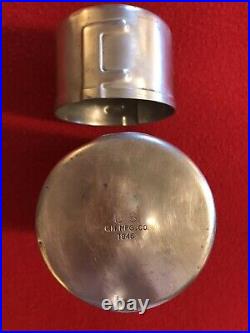

WW2 Mountain/Ski STOVE U. / PW-1-45″ Gas Single Burner with CONTAINER/ Cooking Pots ” U. This is an EXCEPTIONALLY clean stove with the ADJUSTMENT WRENCH and (empty) SPARE PARTS “Box” HOUSING! This Stove is free or rust, corrosion, and carbon residue! The STOVE is EXCELLENT+++. Included is the Tall ALUMINUM 2-piece CARRIER / COOKING POT marked U. / 1945 which is definitely Combat Serviceable despite several shallow dents, and polishing. The MOUNTAIN STOVE was designed not just for Mountain/Ski troops, but to be made available to all ground troops: Armored personnel, Rangers, Paratroopers, etc. This was the lightweight answer to foxhole cooking needs. ” This Stove was also referred to as a “G. Was one of three manufacturers of this improved “M1942 – MODIFIED” Stove each with some slight variations in the feet, arms, and windscreenmarkings. 1944, 1945 production years. (3) Aladdin, 1944, 1945 production years. (3) Coleman Appliance who only produced stoves in 1944. The small ” Bakelite” Valve KNOB and the tiny Wooden KNOB on the cleaner are in perfect condition. All parts move freely! Missing is the highly perishable, bordered ” Yellow” INSTRUCTIONAL DECAL which rarely survived exposure to heat and fuel, or were scratched up extremely easily. This “combat veteran” is the’real deal’ and has seen careful use! The glistening, bright Stainless Steel TANK is completely free of dents, “dings, ” scratches, rust, corrosion, or significant damage of any sort! The Folding Steel LEGS , and supporting ARMS are in perfect shape, operate smoothly, and are free of major heat discoloration and carbon buildup! The Bright Brass FUEL CAP and Pressure PUMP ASSEMBLY are free of tarnishing and in absolutely perfect condition. The Leather GASKET in the Pump is supple, FRESHLY OILED with Neatfoot Oil and works smoothly. The Aluminum Canister /Container/ Carrier /Cooking Pots show the typical shallow dents on the top and bottom and surface wear from use, but SLIDE TOGETHER, and LOCK smoothly! The PRENTISS-WABERS PRODUCTS COMPANY of Grand Rapids (later known as’Wisconsin Rapids’), Wisconsin. ” Under the “Sears, Roebuck and Co. ” name they produced a “Master Chef / Auto-Camp Stove / Sears, Roebuck and Co. ” and another in the 1930s labeled as the “Kook Rite. The Prentiss-Wabers Stove Co. Set up shop in 1915 in Grand Rapids. Taylor was president and the largest investor in the company. Prentiss was secretary and C. The company produced camp stoves and kitchenettes. The company became known as Preway in the 1950s and worked out of the factory that later was acquired by RCH Enterprises. Prentiss-Wabers Stove had many ups and downs in its early years. In 1934, a line of porcelain stoves was moved from a Chicago factory to Wisconsin Rapids, where 170 men worked on their fabrication. A double shift was planned and several buildings along First Street North were used for production. The major problem was that the city was not ready to house the many families that arrived in the area. It took a while to modernize homes that workers from the Chicago area were accustomed to living in. The company received its first World War II contract in 1942 for bombs, detonator fuses and field kitchen equipment. During the war, most civilian products were eliminated except for kerosene stoves, trailer stoves and fuel-oil heaters. Prosperity continued and in 1956, the company manufactured a refrigerator, followed by a dishwasher is 1961. In the 1960s, the company moved from cooking to heating equipment. The biggest success was gas and electric built-in ranges, and the company was well known for its fireplaces. The 1960s and 70s were the best years for the company. In the 1970s, Preway opened a plant in Stevens Point and they also had plants in Perris, Calif. Killeen, Texas, and the Netherlands. As the business grew, so did the size of the buildings and the number of employees. The plants were located in Evansville, Ind. And manufactured outdoor grills and air-conditioners. Like Preway , they were long-time suppliers to Sears. This was the beginning of the end for Preway. It was like a minnow swallowing a whale and the deal sent Preway into the tank, said a resident who recalls the time. Years of lawsuits and losses followed. In 1986, Preway moved its corporate headquarters to Stamford, Conn. And the fireplace division was kept in Wisconsin Rapids. Losses continued, and the fireplace operation closed in 1987. Although employment was seasonal, Preway once employed more than 700 workers. The average number of employees was just less than 500. Jones’ 1923 History of Wood County, Wisconsin , Ch. The Prentiss-Wabers Manufacturing Co. Of Wisconsin Rapids, was started as the Prentiss-Wabers Stove Co. In 1915, with T. Taylor as president, G. Prentiss, secretary, and C. Their products consisted of what was known as the Collapsible Gasoline Camp Stove and kitchenettes, which were a convenient combination of cooking utensils for camp purposes. In 1919 the company was reorganized as the Prentiss-Wabers Manufacturing Co. The manu- facture of the kitchenettes was given up and some considerable improvements made in the stove which is now quite different from the original model and 100 per cent more perfect. It is a high grade outing stove burning low grade gasoline outdoors, and will burn in any wind providing a hot blue flame free from soot and smoke. It is so arranged as to be packed up with equipment in suit case form. It has proved very popular and has a large distribution all over the United States and Canada, an export office having also been established in New York. Background and HISTORY of the M1942 Stove and the M1942-MOD. In June 1942 the Army Quartermaster Corps issued an urgent request : field troops needed a compact stove that could operate at 125 degrees above and 60 degrees below zero, was no larger than a quart bottle of milk, and could burn any kind of fuel. Moreover, the Army wanted 5,000 of the stoves delivered in two months. The end product was better than the Army had requested: the stove could function at 60 degrees below and 150 degrees above Fahrenheit; it could burn all kinds of fuel; it weighed a mere three and one-half pounds; and it was smaller than a quart bottle of milk. The first order for 5,000 units was flown to U. Forces involved in the November 1942 invasion of North Africa. Ernie Pyle, the famous World War II journalist who wrote about the common man’s experience in the war, devoted 15 articles to this compact “single-burner pocket stove” and considered it one of the two most important pieces of noncombat equipment in the war effort, the other being the Jeep! From the exceptional summary, ” SklColorado: Steve’s Life in Colorado”. By the time the Africa campaign began in 1942, construction of Camp Hale in Colorado, was pretty much completed and U. Ski troopers were being trained in skiing, climbing, winter survival and ordinance. Camp Hale eventually became known for its 10th Mountain Division. Somewhere, in this same timeframe, Bestor Robinson , a lawyer, mountaineer and director of the Sierra Club in California prior to WWII, was assigned to a team at the U. Army’s Office of the Quartermaster General with the role of improving clothing and equipment for the Army’s mountain divisions. The team was led by Robert Bates , who was an avid mountaineer, and it’s worth reading his short bio! During this time Robinson was granted patents for the design of a compact stove, which is regularly called the “mountain stove” by many today. His patent designs for the stove and various parts of it can be found by searching the web for these numbers: Patent No. The contract to build the new little stove was awarded to the Aladdin Industries subsidiary of The Mantle Lamp Company of America or Mantle Lamp themselves, and manufactured under the name Aladdin , similar to the parent company’s well-known lamps. It’s kind of confusing exactly who made it, since The Mantle Lamp Company made Aladdin lamps, and they had a subsidiary with the same name, plus, Mantle Lamp eventually merged with Aladdin. Aladdin is still in business today. You may be familiar with some of their products which sell under the Stanley vacuum bottle name and other food and beverage containers. The first model of the stove is commonly called the wheel stove , by many collectors, because of the horizontal wheel used to operate the stove’s burner. My understanding is that the wheel design was to allow troopers to operate the stove in cold weather without removing their gloves or mittens. This model was only made by Aladdin and only in 1943. For reasons unknown to me, the stove was modified from the wheel design to one somewhat more conventional after only one year, particularly in the valve stem. This second stove model is known, and is stamped, as the M-1942 MOD , where’MOD’ denotes’modified. The model was also produced by Aladdin in 1944, and Prentiss Wabers a. Known as Preway of Wisconsin Rapids, Wisconsin and possibly by one other company (possibly Coleman), however, I have been unable to confirm this. In 1945, the M-1942 MOD was produced by Aladdin, Prentiss Wabers and Coleman. Coincidentally, Aladdin and AGM/Thermos ended up in court over the right to manufacture vacuum bottles in the late 1950s. It seems that the term thermos became a generic name, much the same way that the word Kleenex is used instead of facial tissue, or when Xerox was a generic term for making a duplicate paper copy. I’ve never seen manufacturing year stamps past 1945, so it appears that the stove was very short-lived with a production run of only three years; one year being the wheel stove and two years as the MOD-ified stove. The 1943 wheel stove is rather rare and is often found badly rusted since Stainless Steel was not used in its fabrication. What gives this stove such a long life, is that it is mostly stainless steel and brass. Unlike other stoves of the same era, which have steel founts (tanks), steel pot-support/burner frames, and steel tip-cleaner stems, this stove doesn’t get destroyed by rust. However, I’ve worked on two 1943, M-1942 “Wheel” Stoves , which is the early model, and it is not made of stainless steel and can have rust in places where the zinc has worn off. The stove itself is a good design and I’ve found it reliable and enjoyable to use. The tank is stainless steel and I’ve never seen the M-1942 MOD with rust in it or on it. It will typically need a good cleaning, especially because it was designed to run on regular gasoline and was regularly used with that fuel. The gasoline will leave sediment in the tank and generally clog the vaporizer screen. It had a spirit cup for pre-heating the vaporizer a. Generator, folding feet, folding pot support arms, and an 8 ounce tank. Robert Bates, contributor to the design of the M-1942- MOD. Stove and other WWII U. Bates was born in Philadelphia and was the son of William Bates, a classical scholar at the University of Pennsylvania. He briefly attended the William Penn Charter School , and then Phillips Exeter Academy. He attended Harvard University from 1929 to 1935. At Harvard he was a member of the Harvard Mountaineering Club and with Charles Houston, Adams Carter, Bradford Washburn and Terris Moore was part of the group of climbers later known as the “Harvard Five” who would push forward the standards of American mountaineering in the 1930s. In 1937 Bates, with Bradford Washburn, made the first ascent of Mount Lucania in Yukon, which was then the highest unclimbed mountain in North America. It was also one of the most remote and inaccessible and had been declared “virtually impregnable”. The pair enlisted the aid of the pilot Robert Reeve to fly them to the mountain, but when they landed on the Walsh Glacier the aeroplane sank into the unexpectedly soft snow. After they had spent five days digging it out Reeve departed, warning Bates and Washburn that he would not be able to return to collect them as planned and that they would have to walk back to civilization. The pair climbed Mount Lucania , and the nearby Mount Steele, and were then faced with a 100-mile (160 km) trek through wilderness to Burwash Landing , without maps. They abandoned some of their food to save weight, expecting to restock at a cache left behind by an earlier expedition. However, the cache had been plundered by bears, and Bates and Washburn survived on mushrooms and squirrels during the trek out. Flooded rivers forced them to detour many miles out of their way, and they had eventually walked an estimated 156 miles by the time they reached Burwash Landing , 32 days after arriving on the glacier. The two men lost around twenty pounds each during the walk out. In 1937, Charles Houston invited Bates on an expedition to K2 for 1938, the world’s second highest mountain. It was the first expedition to the mountain for nineteen years, and while the focus was on reconnaissance and assessing the feasibility of different routes, Bates was part of a group which reached within 800 m of the summit on the Abruzzi Spur , which would become the preferred route on the mountain. The expedition failed due to bad weather and the illness of Art Gilkey, but was widely praised for the courage shown by the team in their unsuccessful attempt to save Gilkey. During the descent, Bates and five other climbers were involved in a near-fatal fall, saved only by the strength of Pete Schoening, who was the last man on the rope. Bates later received the David A. Sowles Memorial Award for his part in the attempted rescue. During the Second World War Bates served in the United States Army and was assigned to the Office of the Quartermaster general, where he worked on the development of improved equipment and clothing for the army’s mountain divisions. He recruited a skilled wartime team that included mountaineers William P. Wood III, Bestor Robinson , H. Adams Carter, Terris Moore, Bradford Washburn and Australian arctic explorer Hubert Wilkins. He reached the rank of Lieutenant Colonel and was awarded a Bronze Star and the Legion of Merit. After the war, Bates taught English at Phillips Exeter Academy. He continued mountaineering throughout his life, and at the age of 74 led an expedition which made the first ascent of Ulugh Muztagh in China. He also spent a year in Kathmandu directing a Peace Corps project, and served as president of the American Alpine Club , which awards the Robert Hicks Bates Award to promising young climbers in his honour. Bates was the author of several books. With Charles Houston he wrote accounts of their two K2 expeditions as Five Miles High and K2 – The Savage Mountain ; the latter being regarded as a mountaineering classic. He also wrote Mystery, Beauty, and Danger , a study of mountaineering literature, and Mountain Man: The Story of Belmore Brown , the biography of an artist and explorer. His autobiography, The Love of Mountains Is Best , was published in 1994. The item “WW2 Mountain Stove M1942-MOD. P. W. 1-45 & Carrier Pot! Excellent+++” is in sale since Tuesday, December 1, 2020. This item is in the category “Collectibles\Militaria\WW II (1939-45)\Original Period Items\United States\Field Gear, Equipment”. The seller is “bataan12213″ and is located in Little Rock, Arkansas. This item can be shipped to United States, Canada, Bahamas, Uruguay.
- Modified Item: No
- Theme: Militaria
- Country/Region of Manufacture: United States
- Original/Reproduction: Original
- Region of Origin: United States
- Conflict: WW II (1939-45)


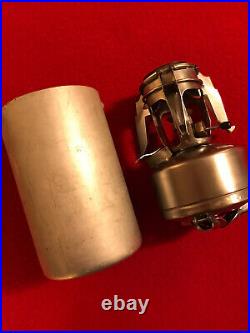
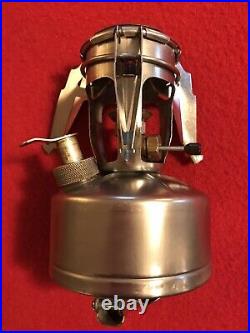
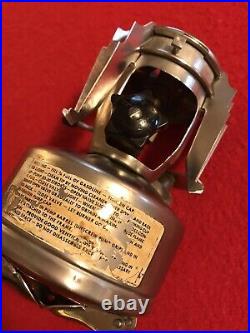
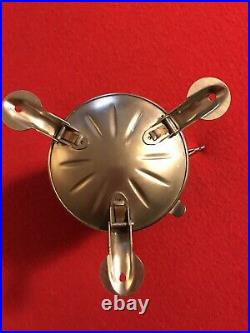
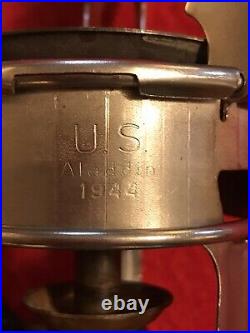

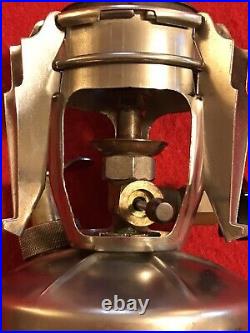
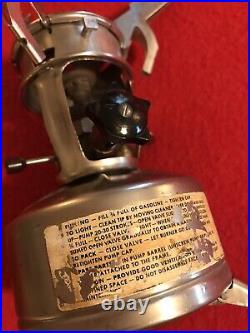
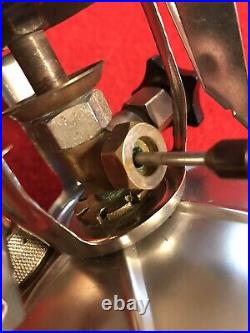
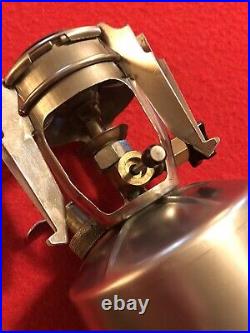
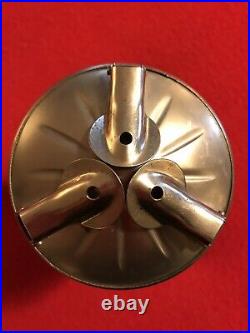
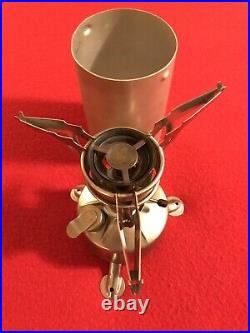

WW2 Mountain/Ski Stove U. / ALADDIN /1944 Gas Single Burner M1942 MOD. This is an EXCEPTIONALLY clean and FULLY FUNCTIONING, WORKING stove! No Wrench or Spare Part container. Included is the Tall ALUMINUM BOTTOM Section only, CARRIER / COOKING POT marked C. It is in NEAR MINT++ Condition! Contrary to what many collectors have concluded about its association with Mountain/Ski troops, this Stove was designed not just for Mountain/Ski troops, but to be made available to all ground troops: Armored personnel, Rangers, Paratroopers, etc. This was the lightweight answer to foxhole cooking needs. ” This Stove was also referred to as a “G. ALADDIN (The Mantle Lamp Company of Chicago, established in 1908) was one of three contractors of this improved “M1942 – MODIFIED” Stove. (1) Coleman Appliance who only produced stoves in 1944. (2) Prentiss Wabers P. 1944, 1945 production years. (3) Aladdin, 1944, 1945 production years. But ONLY ALADDIN produced a model in 1944, the first of production of this “MODIFIED” Stove, that did NOT have the designation of M-1942-MOD. Stamped into the Steel, which makes this model and this year a significant variant! In June 1942 the Army Quartermaster Corps issued an urgent request : field troops needed a compact stove that could operate at 125 degrees above and 60 degrees below zero, was no larger than a quart bottle of milk, and could burn any kind of fuel. Moreover, the Army wanted 5,000 of the stoves delivered in two months. The end product was better than the Army had requested: the stove could function at 60 degrees below and 150 degrees above Fahrenheit; it could burn all kinds of fuel; it weighed a mere three and one-half pounds; and it was smaller than a quart bottle of milk. The first order for 5,000 units was flown to U. Forces involved in the November 1942 invasion of North Africa. Ernie Pyle, the famous World War II journalist who wrote about the common man’s experience in the war, devoted 15 articles to this compact “single-burner pocket stove” and considered it one of the two most important pieces of noncombat equipment in the war effort, the other being the Jeep! The remnants of the ORIGINAL Decal remain (–yes, there are reproductions of vinyl or paper). This highly perishable, bordered ” Yellow” INSTRUCTIONAL DECAL rarely survived exposure to heat and fuel, or were scratched up extremely easily. This “combat veteran” is the’real deal’ and not a facsimile! The glistening, bright Stainless Steel TANK is completely free of dents, “dings, ” scratches, rust, corrosion, or damage of any sort! The Folding Steel LEGS , and supporting ARMS are in perfect shape, operate smoothly, and are free of heat discoloration and carbon buildup! The Brass FUEL CAP and Pressure PUMP ASSEMBLY are free of tarnishing and in absolutely perfect condition. The Leather GASKET in the Pump is supple and works smoothly, generating excellent pressure! From the exceptional summary, ” SklColorado: Steve’s Life in Colorado”. By the time the Africa campaign began in 1942, construction of Camp Hale in Colorado, was pretty much completed and U. Ski troopers were being trained in skiing, climbing, winter survival and ordinance. Camp Hale eventually became known for its 10th Mountain Division. Somewhere, in this same timeframe, Bestor Robinson , a lawyer, mountaineer and director of the Sierra Club in California prior to WWII, was assigned to a team at the U. Army’s Office of the Quartermaster General with the role of improving clothing and equipment for the Army’s mountain divisions. The team was led by Robert Bates , who was an avid mountaineer, and it’s worth reading his short bio! During this time Robinson was granted patents for the design of a compact stove, which is regularly called the “mountain stove” by many today. His patent designs for the stove and various parts of it can be found by searching the web for these numbers: Patent No. The contract to build the new little stove was awarded to the Aladdin Industries subsidiary of The Mantle Lamp Company of America or Mantle Lamp themselves, and manufactured under the name Aladdin , similar to the parent company’s well-known lamps. It’s kind of confusing exactly who made it, since The Mantle Lamp Company made Aladdin lamps, and they had a subsidiary with the same name, plus, Mantle Lamp eventually merged with Aladdin. Aladdin is still in business today. You may be familiar with some of their products which sell under the Stanley vacuum bottle name and other food and beverage containers. The first model of the stove is commonly called the wheel stove , by many collectors, because of the horizontal wheel used to operate the stove’s burner. My understanding is that the wheel design was to allow troopers to operate the stove in cold weather without removing their gloves or mittens. This model was only made by Aladdin and only in 1943. For reasons unknown to me, the stove was modified from the wheel design to one somewhat more conventional after only one year, particularly in the valve stem. This second stove model is known, and is stamped, as the M-1942 MOD , where’MOD’ denotes’modified. The model was also produced by Aladdin in 1944, and Prentiss Wabers a. Known as Preway of Wisconsin Rapids, Wisconsin and possibly by one other company (possibly Coleman), however, I have been unable to confirm this. In 1945, the M-1942 MOD was produced by Aladdin, Prentiss Wabers and Coleman. Coincidentally, Aladdin and AGM/Thermos ended up in court over the right to manufacture vacuum bottles in the late 1950s. It seems that the term thermos became a generic name, much the same way that the word Kleenex is used instead of facial tissue, or when Xerox was a generic term for making a duplicate paper copy. I’ve never seen manufacturing year stamps past 1945, so it appears that the stove was very short-lived with a production run of only three years; one year being the wheel stove and two years as the MOD-ified stove. The 1943 wheel stove is rather rare and is often found badly rusted since Stainless Steel was not used in its fabrication. What gives this stove such a long life, is that it is mostly stainless steel and brass. Unlike other stoves of the same era, which have steel founts (tanks), steel pot-support/burner frames, and steel tip-cleaner stems, this stove doesn’t get destroyed by rust. However, I’ve worked on two 1943, M-1942 “Wheel” Stoves , which is the early model, and it is not made of stainless steel and can have rust in places where the zinc has worn off. The stove itself is a good design and I’ve found it reliable and enjoyable to use. The tank is stainless steel and I’ve never seen the M-1942 MOD with rust in it or on it. It will typically need a good cleaning, especially because it was designed to run on regular gasoline and was regularly used with that fuel. The gasoline will leave sediment in the tank and generally clog the vaporizer screen. It had a spirit cup for pre-heating the vaporizer a. Generator, folding feet, folding pot support arms, and an 8 ounce tank. Robert Bates, contributor to the design of the M-1942- MOD. Stove and other WWII U. Bates was born in Philadelphia and was the son of William Bates, a classical scholar at the University of Pennsylvania. He briefly attended the William Penn Charter School , and then Phillips Exeter Academy. He attended Harvard University from 1929 to 1935. At Harvard he was a member of the Harvard Mountaineering Club and with Charles Houston, Adams Carter, Bradford Washburn and Terris Moore was part of the group of climbers later known as the “Harvard Five” who would push forward the standards of American mountaineering in the 1930s. In 1937 Bates, with Bradford Washburn, made the first ascent of Mount Lucania in Yukon, which was then the highest unclimbed mountain in North America. It was also one of the most remote and inaccessible and had been declared “virtually impregnable”. The pair enlisted the aid of the pilot Robert Reeve to fly them to the mountain, but when they landed on the Walsh Glacier the aeroplane sank into the unexpectedly soft snow. After they had spent five days digging it out Reeve departed, warning Bates and Washburn that he would not be able to return to collect them as planned and that they would have to walk back to civilization. The pair climbed Mount Lucania , and the nearby Mount Steele, and were then faced with a 100-mile (160 km) trek through wilderness to Burwash Landing , without maps. They abandoned some of their food to save weight, expecting to restock at a cache left behind by an earlier expedition. However, the cache had been plundered by bears, and Bates and Washburn survived on mushrooms and squirrels during the trek out. Flooded rivers forced them to detour many miles out of their way, and they had eventually walked an estimated 156 miles by the time they reached Burwash Landing , 32 days after arriving on the glacier. The two men lost around twenty pounds each during the walk out. In 1937, Charles Houston invited Bates on an expedition to K2 for 1938, the world’s second highest mountain. It was the first expedition to the mountain for nineteen years, and while the focus was on reconnaissance and assessing the feasibility of different routes, Bates was part of a group which reached within 800 m of the summit on the Abruzzi Spur , which would become the preferred route on the mountain. The expedition failed due to bad weather and the illness of Art Gilkey, but was widely praised for the courage shown by the team in their unsuccessful attempt to save Gilkey. During the descent, Bates and five other climbers were involved in a near-fatal fall, saved only by the strength of Pete Schoening, who was the last man on the rope. Bates later received the David A. Sowles Memorial Award for his part in the attempted rescue. During the Second World War Bates served in the United States Army and was assigned to the Office of the Quartermaster general, where he worked on the development of improved equipment and clothing for the army’s mountain divisions. He recruited a skilled wartime team that included mountaineers William P. Wood III, Bestor Robinson , H. Adams Carter, Terris Moore, Bradford Washburn and Australian arctic explorer Hubert Wilkins. He reached the rank of Lieutenant Colonel and was awarded a Bronze Star and the Legion of Merit. After the war, Bates taught English at Phillips Exeter Academy. He continued mountaineering throughout his life, and at the age of 74 led an expedition which made the first ascent of Ulugh Muztagh in China. He also spent a year in Kathmandu directing a Peace Corps project, and served as president of the American Alpine Club , which awards the Robert Hicks Bates Award to promising young climbers in his honour. Bates was the author of several books. With Charles Houston he wrote accounts of their two K2 expeditions as Five Miles High and K2 – The Savage Mountain ; the latter being regarded as a mountaineering classic. He also wrote Mystery, Beauty, and Danger , a study of mountaineering literature, and Mountain Man: The Story of Belmore Brown , the biography of an artist and explorer. His autobiography, The Love of Mountains Is Best , was published in 1994. The item “WW2 Mountain Gas Stove ALADDIN 1944 M1942-MOD. Label & Carrier Pot C. M. Mfg” is in sale since Sunday, November 8, 2020. This item is in the category “Collectibles\Militaria\WW II (1939-45)\Original Period Items\United States\Field Gear, Equipment”. The seller is “bataan12213″ and is located in Little Rock, Arkansas. This item can be shipped to United States.
- Modified Item: No
- Theme: Militaria
- Country/Region of Manufacture: United States
- Original/Reproduction: Original
- Region of Origin: United States
- Conflict: WW II (1939-45)






















































